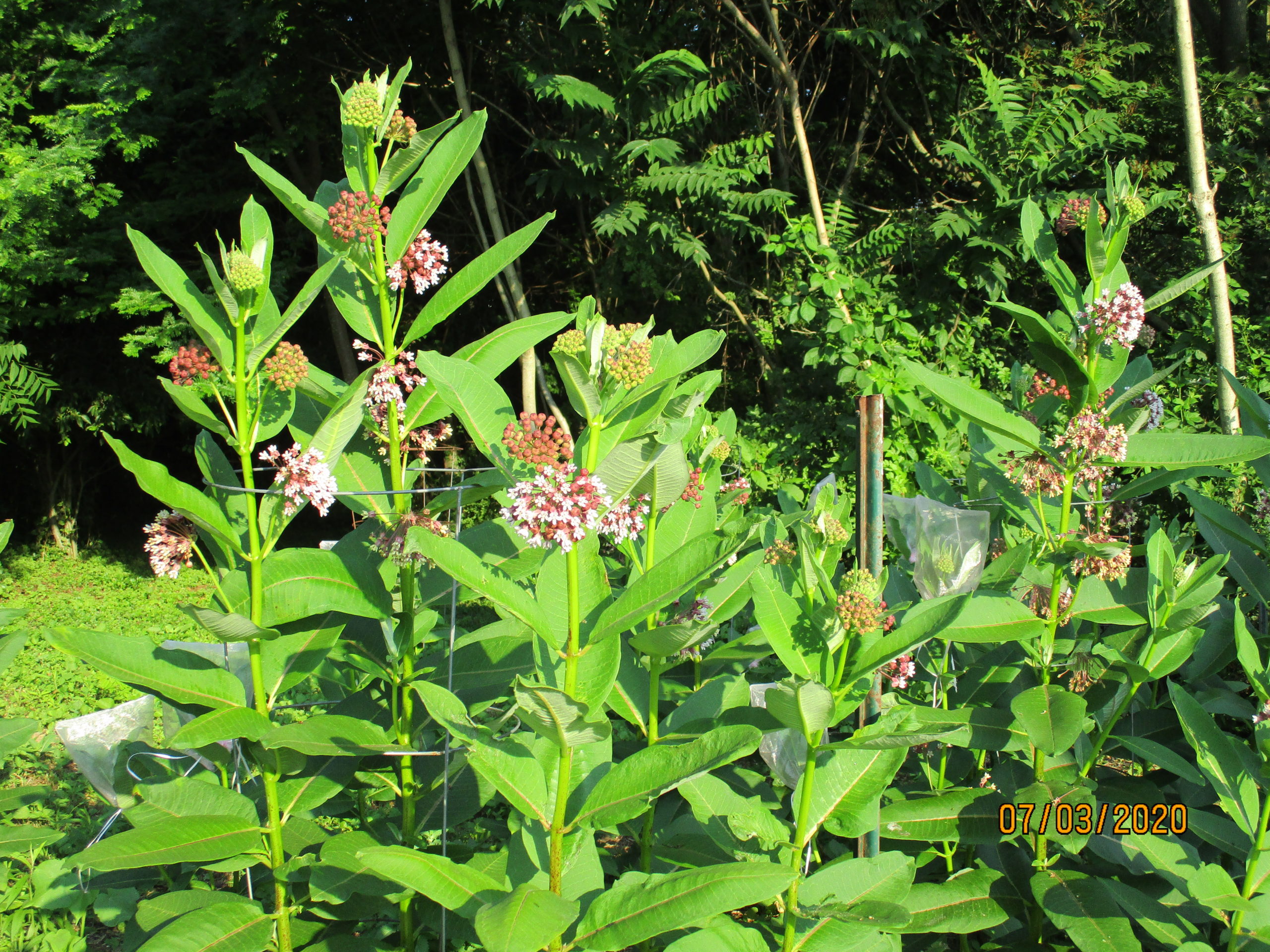
The development and widely adopted cultivation of herbicide-resistant staple crops such as corn and soybeans have led to a massive reduction in weeds and native plants such as milkweeds. Monarch butterfly larvae consume only milkweeds, and monarch populations may decline when milkweeds are eliminated with herbicides. are more likely to visit unrelated individuals. in the fertilization of flowers because Bombus spp. syriaca has a high level of self-incompatibility, it is less effective than ' Bombus spp. mellifera was found to be the most "effective" pollinator, but this occurs more often among flowers of the same plant since A. mid-Atlantic region, the introduced species A. syriaca flowers, and some kinds pollinate them, including Apis mellifera, the Western honey bee, and native Bombus spp. syriaca, including flies, beetles, ants, bees, wasps, and butterflies it is an important food source for monarch butterfly caterpillars ( Danaus plexippus) other species that feed on the plant include red milkweed beetle ( Tetraopes tetraophthalmus), the milkweed tussock caterpillar ( Euchaetes egle) and Oncopeltus fasciatus and Lygaeus kalmii. In three study plots, outcrossed flowers had an average of about 11% fruit set. Fruit production from self-fertilization is rare. The seeds, each with long, white flossy hairs, occur in large follicles. Individual flowers are about 1 cm (0.4 in) in diameter, each with five horn-like hoods and five pollinia. The highly fragrant, nectariferous flowers vary from white (rarely) through pinkish and purplish and occur in umbellate cymes. They have very short petioles and velvety undersides. They grow to 10–28 cm (4–11 in) long and 4–12 cm ( 1 + 1⁄ 2– 4 + 3⁄ 4 in) broad, usually with entire, undulate margins and reddish main veins. The simple leaves are opposite, sometimes whorled broadly ovate- lanceolate. All parts of common milkweed plants produce a white latex when cut. syriaca is a clonal perennial forb growing up to 1.8 m (5 ft 11 in) tall. It grows in sandy soils as well as other kinds of soils in sunny areas.Ī. It is in the genus Asclepias, the milkweeds.



It is native to southern Canada and much of the United States east of the Rocky Mountains, excluding the drier parts of the prairies. Asclepias syriaca, commonly called common milkweed, butterfly flower, silkweed, silky swallow-wort, and Virginia silkweed, is a species of flowering plant.


 0 kommentar(er)
0 kommentar(er)
